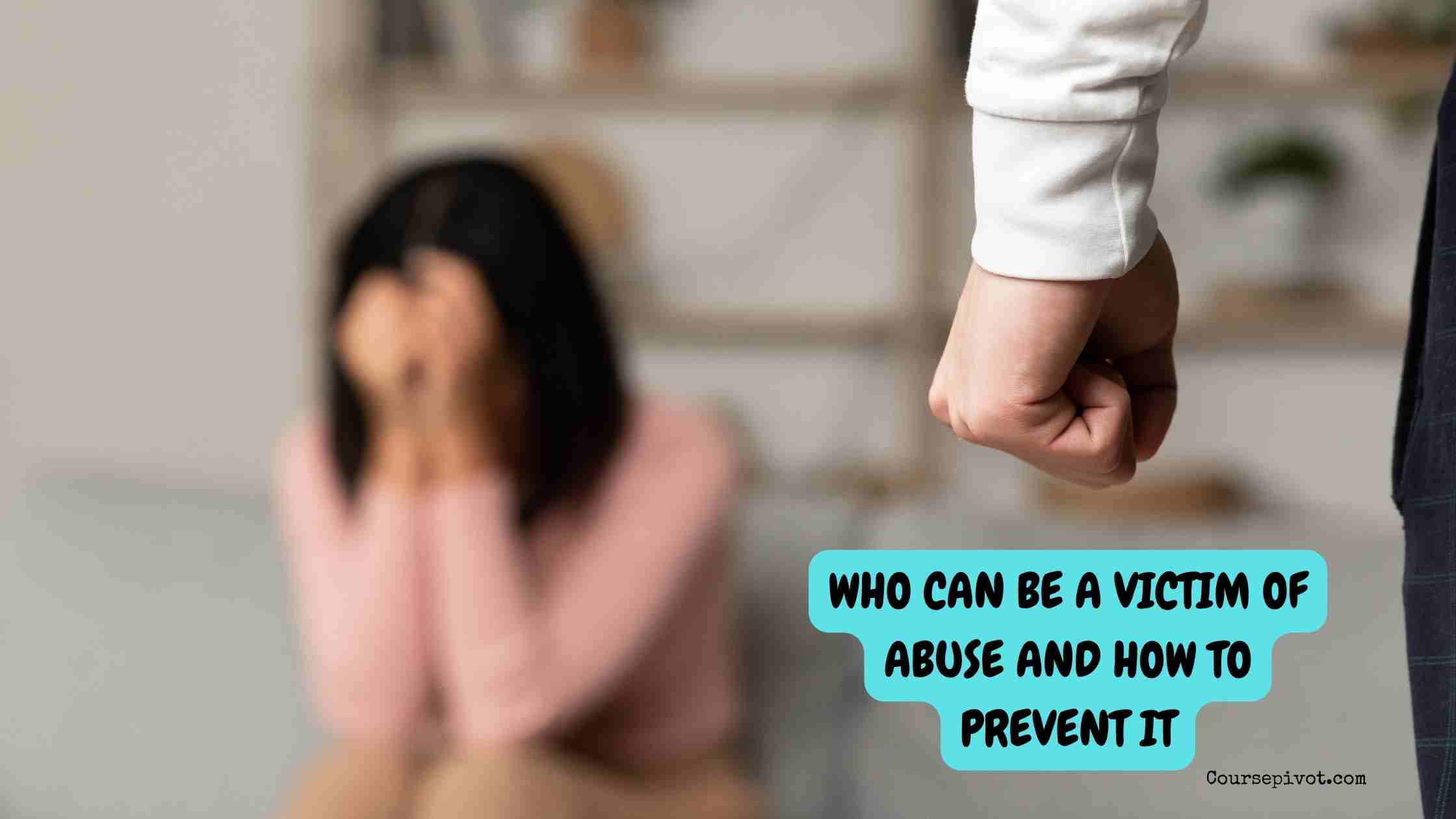
Who Can Be a Victim of Abuse and How to Prevent It
Abuse is a painful and widespread reality that can affect anyone—regardless of age, gender, background, or status. It is not limited to a particular demographic or income group. From children to elders, abuse takes many forms—physical, emotional, sexual, and financial—and leaves long-term emotional and social scars. This blog takes a deeper look at who can be a victim of abuse, supported by recent statistics, and offers actionable strategies to prevent it in all areas of life.
Table of Contents
Abuse Can Happen to Anyone
While many people associate abuse with domestic settings or child maltreatment, the truth is broader. Abuse is an act of control or harm, and it targets people in vulnerable, unequal, or dependent positions. The latest research highlights how widespread the problem is across all sectors of society.
Children
In 2022, approximately 558,899 U.S. children were identified as victims of abuse or neglect. That’s about 8 in every 1,000 children, according to the National Children’s Alliance. Child abuse includes physical violence, emotional harm, neglect, and sexual exploitation.
Elderly Adults
About 10% of seniors experience some form of abuse each year. Many cases go unreported due to isolation or dependence on the abuser. Financial exploitation and caregiver neglect are among the most common forms of elder abuse.
- Read our blog on 7 Signs You Hate Yourself
People with Disabilities
Those living with physical or mental disabilities are 2 to 3 times more likely to be abused than those without. Abuse can come from caregivers, relatives, or even professionals entrusted with their care.
LGBTQ+ Community
Abuse rates are disproportionately high. Studies show 43% of lesbian women and 26% of gay men have experienced intimate partner violence. Transgender individuals also face heightened risks due to social stigma and discrimination.
Low-Income Individuals
Economic hardship is a significant risk factor. Families living in poverty face additional stress, and financial dependence often traps victims in abusive situations. Abuse can both cause and result from economic instability.
People in Power Imbalances
Anyone in a relationship where power is skewed—such as employees with abusive bosses, students with predatory mentors, or dependent spouses—can fall victim to abuse.
Why Prevention Must Be a Priority
Understanding that anyone can be a victim is the first step. But awareness alone isn’t enough. Prevention must be active, ongoing, and widespread. It begins with educating ourselves and others about what abuse looks like and how to respond to it.
One powerful motivator is the economic cost. In the U.S., child abuse alone carries a yearly cost of $592 billion—a staggering burden that covers healthcare, lost productivity, law enforcement, and long-term trauma (Mom Loves Best, 2025). Preventing abuse isn’t just a moral imperative—it’s also a critical social and economic one.
Steps to Prevent Abuse Before It Starts
Education and Awareness
The more people know about abuse—how to recognize it, how it starts, and what forms it takes—the better equipped they are to protect themselves and others. Schools, workplaces, and communities should invest in education about abuse prevention, consent, healthy boundaries, and relationship dynamics.
Setting Boundaries and Respecting Consent
Everyone has the right to say no. Teaching people how to set personal boundaries—and helping others respect them—can discourage abusive behavior. In families, relationships, and workplaces, clarity about what’s acceptable is essential.
Creating Supportive Networks
People who have someone to talk to are less likely to remain in abusive situations. Communities must promote safe environments where victims can speak up without judgment or retaliation. This includes friends, teachers, managers, neighbors, and health professionals who are trained to listen and act.
Safe Environments and Strong Policies
Whether it’s a school, office, care facility, or online platform, the presence of clear anti-abuse policies makes a difference. Harassment training, reporting channels, and accountability mechanisms send a message that abuse will not be tolerated.
Trust Your Instincts
Many abuse victims say they had a “gut feeling” early on. Trusting that instinct—and encouraging others to do so—can help prevent prolonged harm. If something feels wrong in a relationship or situation, it probably is.
Know the Resources
Victims often don’t know where to turn. Having access to resources can be life-saving. The National Domestic Violence Hotline (1-800-799-7233) is a confidential, 24/7 line where anyone can call for support, safety planning, and information. Other organizations, like child protective services or elder abuse hotlines, also offer support depending on the context.
Empowering Communities to Act
Abuse thrives in silence. The best prevention strategies focus on breaking that silence—through education, empathy, and support. Community engagement is crucial: neighbors looking out for neighbors, coworkers knowing what to do when someone confides in them, and friends checking in when they notice changes in behavior.
We must also combat the underreporting issue. Child sexual abuse, for instance, is notoriously underreported, making it difficult to capture the full extent of the problem. Encouraging reporting, reducing shame, and increasing trust in support systems are vital steps forward.
Abuse Affects Everyone—So Prevention Must Involve Everyone
From children to elders, from marginalized communities to the general population, anyone can be a victim of abuse. It cuts across race, gender, income, and ability. But with education, strong community networks, and effective prevention strategies, we can reduce the risk and protect more lives.
The cost of ignoring abuse is too high—not just financially, but in human suffering. Prevention starts with understanding and continues with action. Let’s commit to building a world where abuse is neither hidden nor tolerated.
If you or someone you know is in danger, contact the National Domestic Violence Hotline at 1-800-799-SAFE (7233) or visit thehotline.org for live chat support.
Cite this article
You can copy and paste your preferred citation format below.
Martin, L. & Arquette, E.. (2025, May 30). Who Can Be a Victim of Abuse and How to Prevent It. Coursepivot.com. https://coursepivot.com/blog/explain-who-can-be-a-victim-of-abuse-and-how-to-prevent-it/



